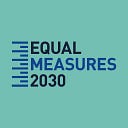Is gender equality critical to the success of the Sustainable Development Goals?
Gender equality and progress towards the SDGs
Underpinning the Sustainable Development Goals (SDGs) are 169 targets; these targets break down the goals into specific actions or outcomes that countries should aim for. Many of these targets are interlinked and dependent upon each other, and some more so than others. Recent research in the journal Sustainability Science used a “systems approach” to model how the SDG targets interact with each other, identifying which are most likely to act as multipliers of change. Gender equality emerges as a cross-cutting issue that is embedded into all 17 SDGs and underpins the progress of most, if not all, of the goals and targets.
It’s widely acknowledged that there is a dedicated goal to achieving equality for women and girls (SDG 5) and broadly understood that the SDGs will never be achieved if we exclude and don’t fully leverage the talents of half of the world’s population. Yet, despite this, we have found that there is a lack of more systematic assessment of how gender equality is connected to or affects each of the 169 SDG targets. The Equal Measures 2030 (EM2030) SDG Gender Index is a data tool that puts a gender lens on the larger SDG framework. As part of our effort to construct that Index, we have also undertaken an initial assessment of how gender equality is linked to progress on the full range of SDG targets.
Assessing the importance of gender equality across the SDGs
EM2030 conducted a rating exercise to assess the degree to which each of the 169 SDG targets are reliant on gender equality. We considered criteria such as whether the target could be achieved in a world where gender inequalities persist, and whether leadership and participation of women and girls has the potential to make the target more likely to be achieved. In many cases, women and girls would disproportionately benefit from progress on that target.
We rated each of the 169 SDG targets using the following scale:
- 1 — Progress towards this target is minimally related to gender equality
- 2 — Progress towards this target is partly related to gender equality
- 3 — Progress on this target is significantly linked to gender equality
- 4 — Progress on this target directly relies on gender equality
We found that almost half (47%) of targets are directly and inherently related to achievement of gender equality and almost three quarters (74%) of the target’s achievement are significantly influenced by gender equality.
The scoring varied by goal, with SDGs on gender equality (SDG 5), education (SDG 4), poverty (SDG 1), decent work (SDG 8), justice (SDG 16) having a high proportion of targets that are reliant on gender equality in order to be achieved (see Figure 1). Goals related to the environment such as the oceans (SDG 14) and forests (SDG 15) goals — have less direct links to progress on gender equality, however gender equality remains relevant for making progress even on goals that appear “purely” focused on the environment. The links between gender equality and environmental sustainability are increasingly recognized.

How we applied the rating scale to assess the importance of gender equality
Using the 4-point rating scale outlined above, we considered the extent that progress is reliant on gender equality (see Figure 2).
- To receive the highest score (4) the target has explicit mentions of gender, sex, women, girls, inclusion, universality, etc. The target includes a gender-specific indicator as designated by UN-Women.
- To receive a score of 3, the target does not mention gender explicitly, but it is where data show that there are significant gender disparities and where women are important actors in achieving the goal.
- For a score of 2, the target refers to objectives that appear gender-neutral but where women may play a role in implementation.
- And finally, for a score of 1 the target refers to objectives such as increasing funding, establishing policies, etc. usually found in targets for means of implementation (designated in the framework by a letter, e.g., a, b, c, etc.).

Looking at all the SDGs, alongside of goal 5 on gender equality
At the heart of EM2030s SDG Gender Index is the idea that gender equality is not limited to a single goal, but a crucial ingredient in making progress across the SDG framework. While SDG 5 (the dedicated gender equality goal) monitors high priority issues (e.g., legal frameworks, political empowerment, gender-based violence, the care economy), it is essential to look at how gender equality issues show up across the whole of the SDGs. For example, Spain ranks first in the world on the indicators included in Goal 5 on gender equality in the SDG Gender Index, but when applying a gender lens to Goal 1 on poverty, Spain ranks 51st in the world and using a gender lens on Goal 4 on education places Spain 29th in the world.
Evidence shows that changes in a seemingly “gender-blind” SDG indicator can have a disproportionate impact on women and girls. For example, in relation to access to water, we know that girls and women face the burden of water collection or in terms of unclean energy used for cooking, we see marked impacts on the health of women.
These are areas where the indicators used to measure progress need to better reflect these disproportionate impacts. For many, this speaks to an inherent truth rather than surprising results — it’s clear that women as actors and as beneficiaries are fundamentally bound to the achievement of SDG targets.
Action on gender equality needs to be a priority beyond the “usual suspects” like Ministries for Women and Children, or Gender Ministries. Gender equality should be considered and prioritized by all stakeholders, including those responsible for finance, ICTs, energy, and public services like education, health, water and sanitation and many other areas.
